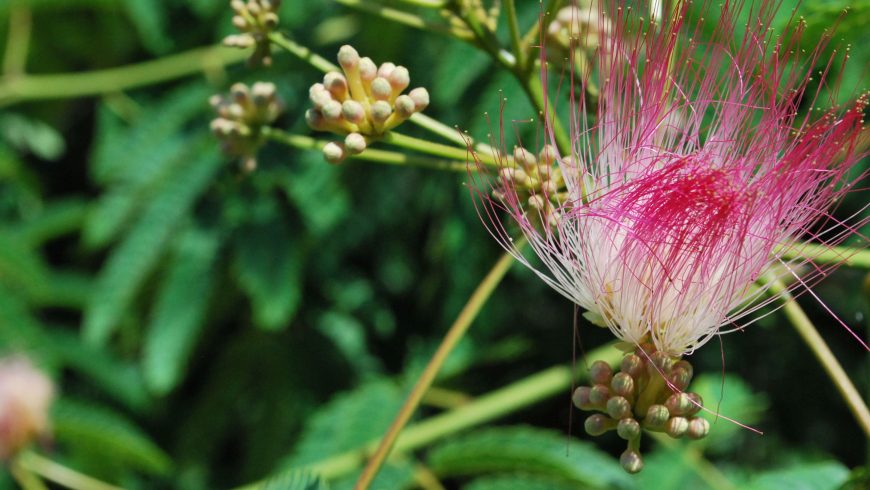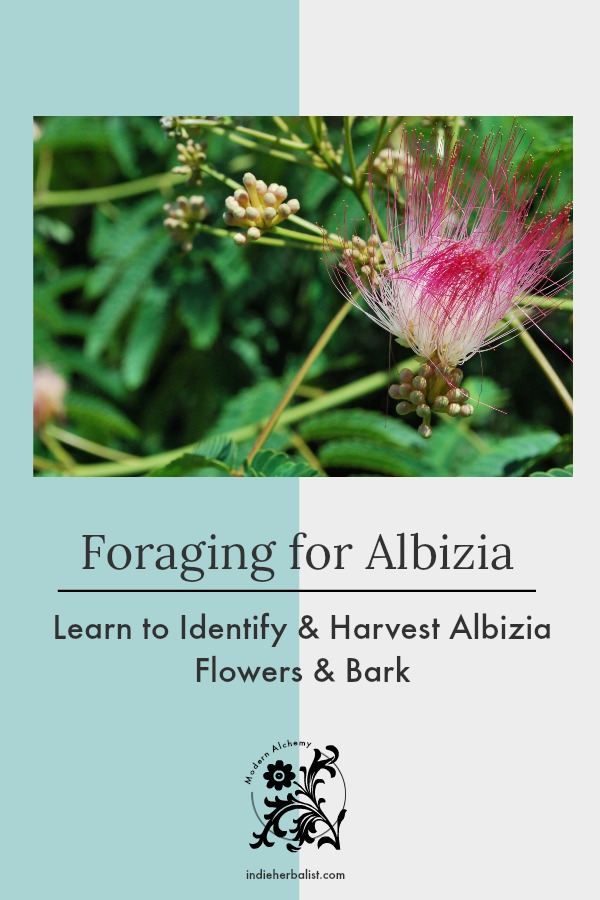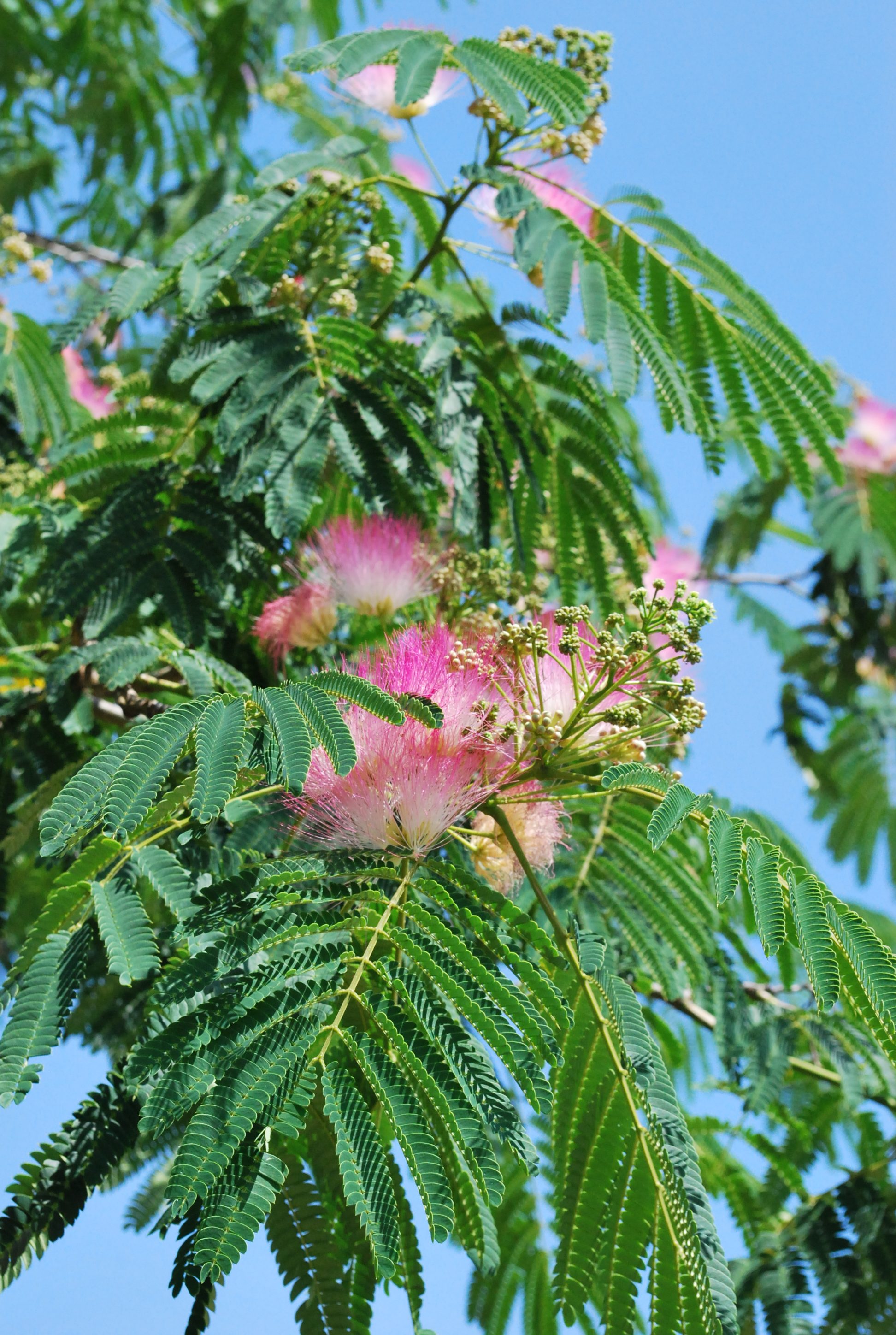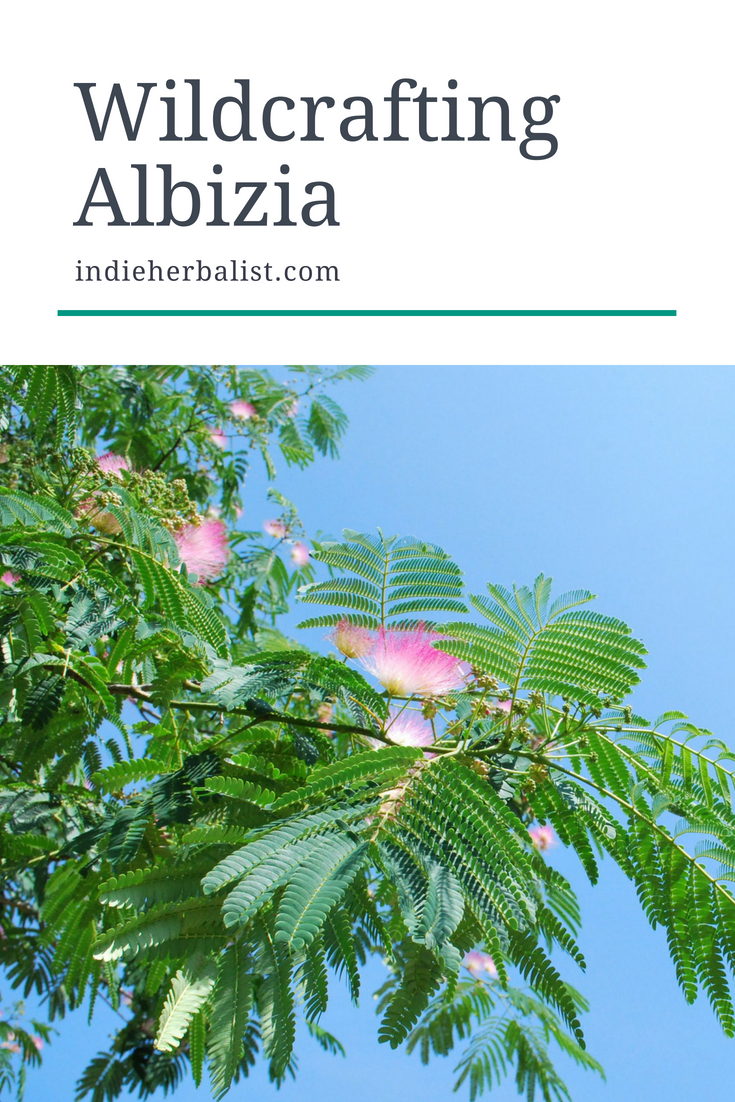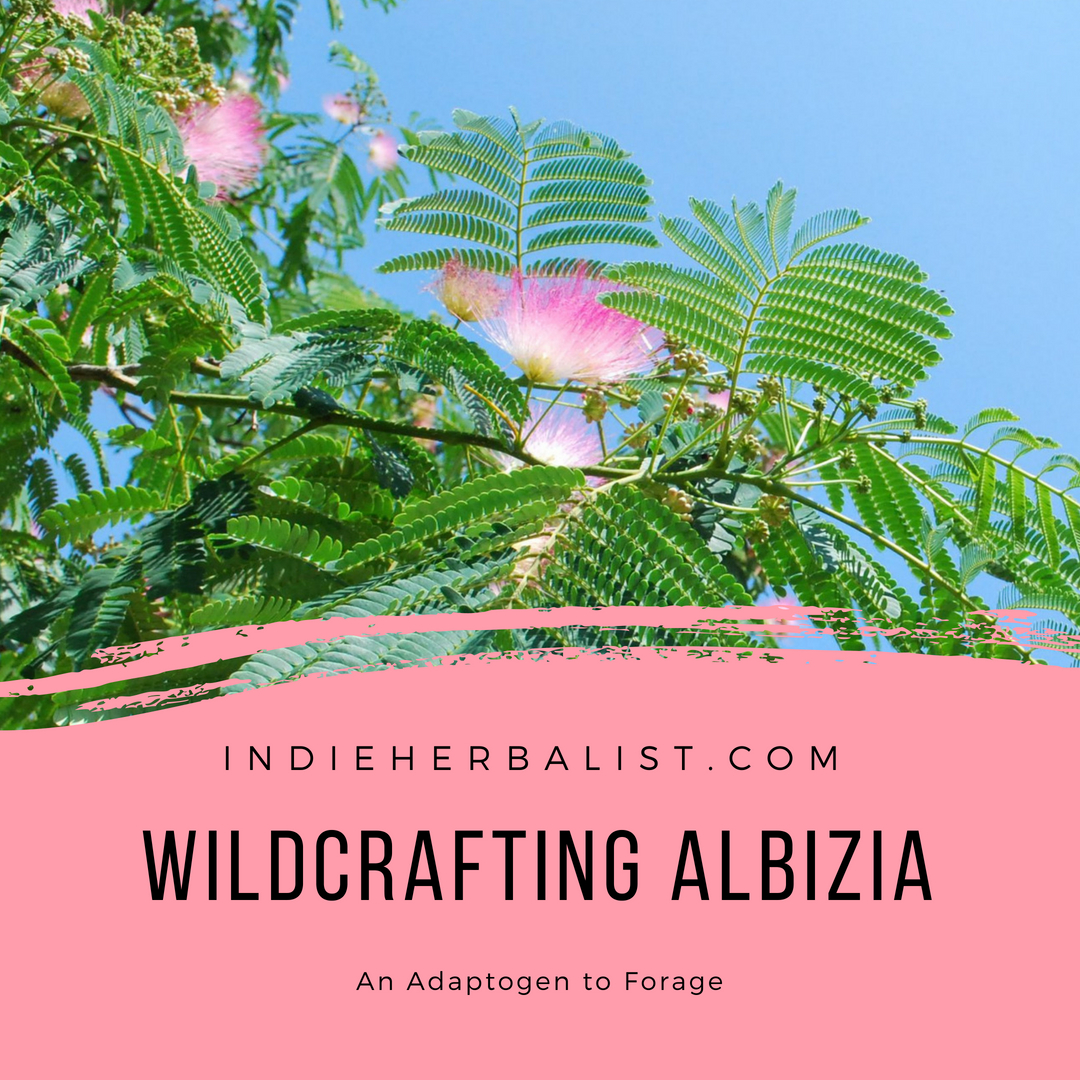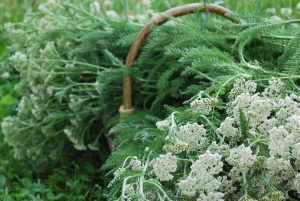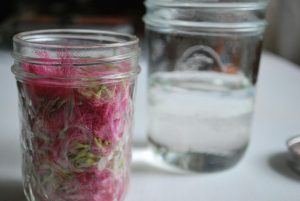Links contained in this post and elsewhere on my website may include affiliate links. When you make a purchase through these links, I earn a commission at no additional cost to you. I only link to products and services that I love - and that I think you will love, too!
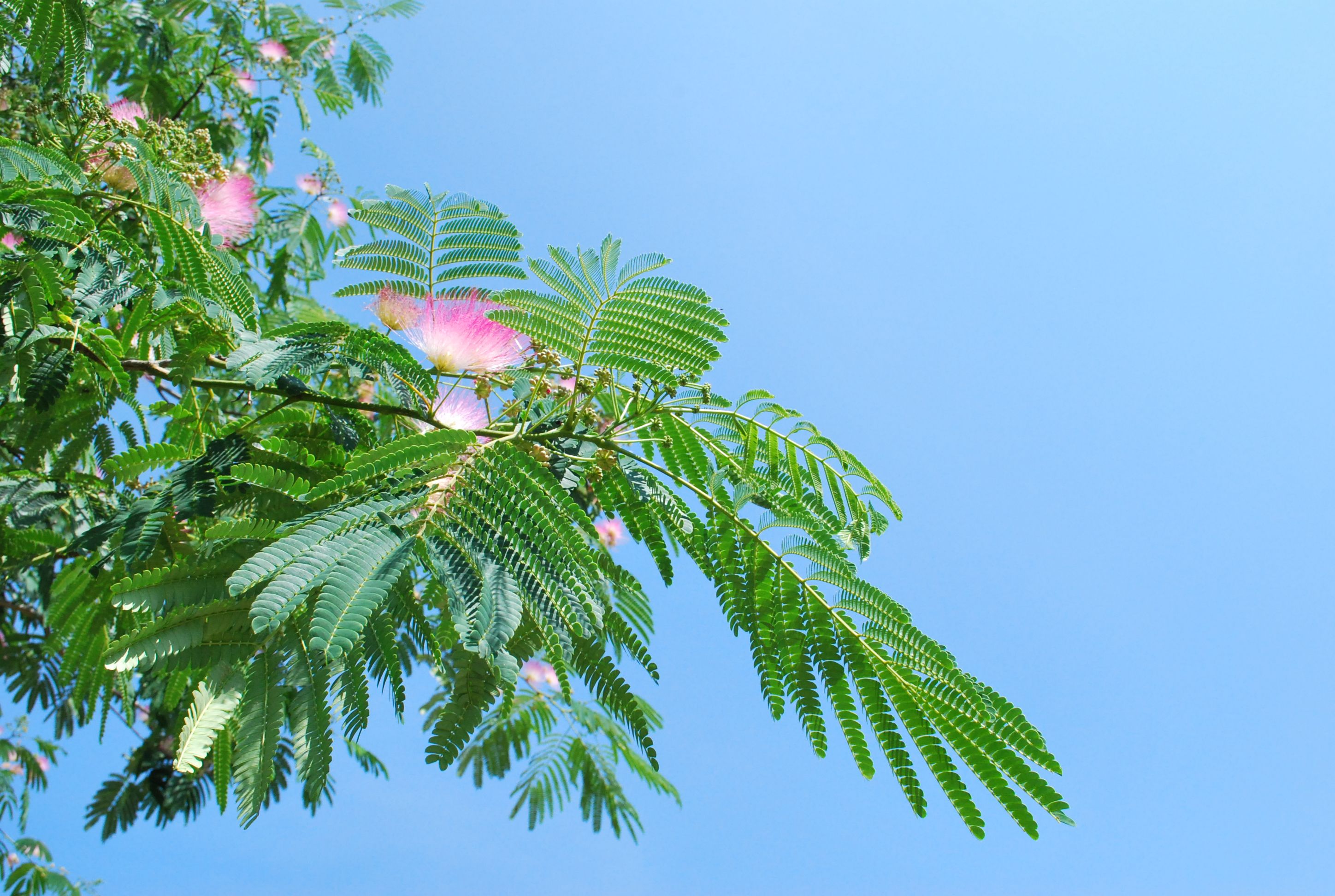
Adaptogens are a group of herbs that support everyday health by assisting our bodies’ response to stress. I’ve written an entire recipe book with easy ways to add adaptogens to your daily wellness routines, but today I want to explore one adaptogen in particular: Albizia julibrissin, also known as mimosa and Persian silk tree.
Albizia, with flowers that look a little like something from a Dr. Seuss story, is originally from Asia. However, it can be wildcrafted in many parts of the United States. It’s possibly growing right in your backyard, because it first arrived in this country as a garden ornamental. It liked the climate so much that it soon spread and naturalized in many different states!
How to Identify Albizia
Albizia is a tree, but it happens to be in the Fabaceae, or Pea, family. The leaves have an unusual fern-like appearance, but the pink flower tufts are what make this tree so easy to identify. The flowers appear in summer. In our area, they usually begin to bloom sometime in late May or early June.
There are a few trees that can be confused with Albizia because of their similar appearances. These include:
- honey locust
- rattlebox
- catclaw mimosa
- desert fern
This website by Virginia Tech Department of Forest Resources has a wonderful page with more information on properly identifying Albizia and its lookalikes.
How to Harvest Albizia
The flowers are the easiest and most sustainable part to harvest of this plant. Simply collect them by pinching them gently from the tree with your fingers. Each flower tuft grows on a long green stem, and I prefer to pinch where the stem connects to the tree. After that, it’s easy to pinch the flower tufts from the stems once you get home. It also allows you to sort through the blossoms thoroughly to check for inchworms (which seem to have an affinity for albizia flowers).
It doesn’t take much Albizia to make plenty of extract and glycerite to get my household through the year. A single 16 oz mason jar of the tufted flowers, minus the stems, is more than enough. I don’t typically use the bark because I don’t have any trees which need pruning at the moment. I won’t usually harvest branches unless I find a spot that needs pruning or am growing a managed coppice.
If you decide to harvest bark, remember that the best way to collect bark without damaging the tree is by harvesting a small branch that can easily be cut cleanly with pruning shears. You should never cut large strips of bark from around the trunk- doing so damages the tree’s circulation and can lead to disease or death of the tree.
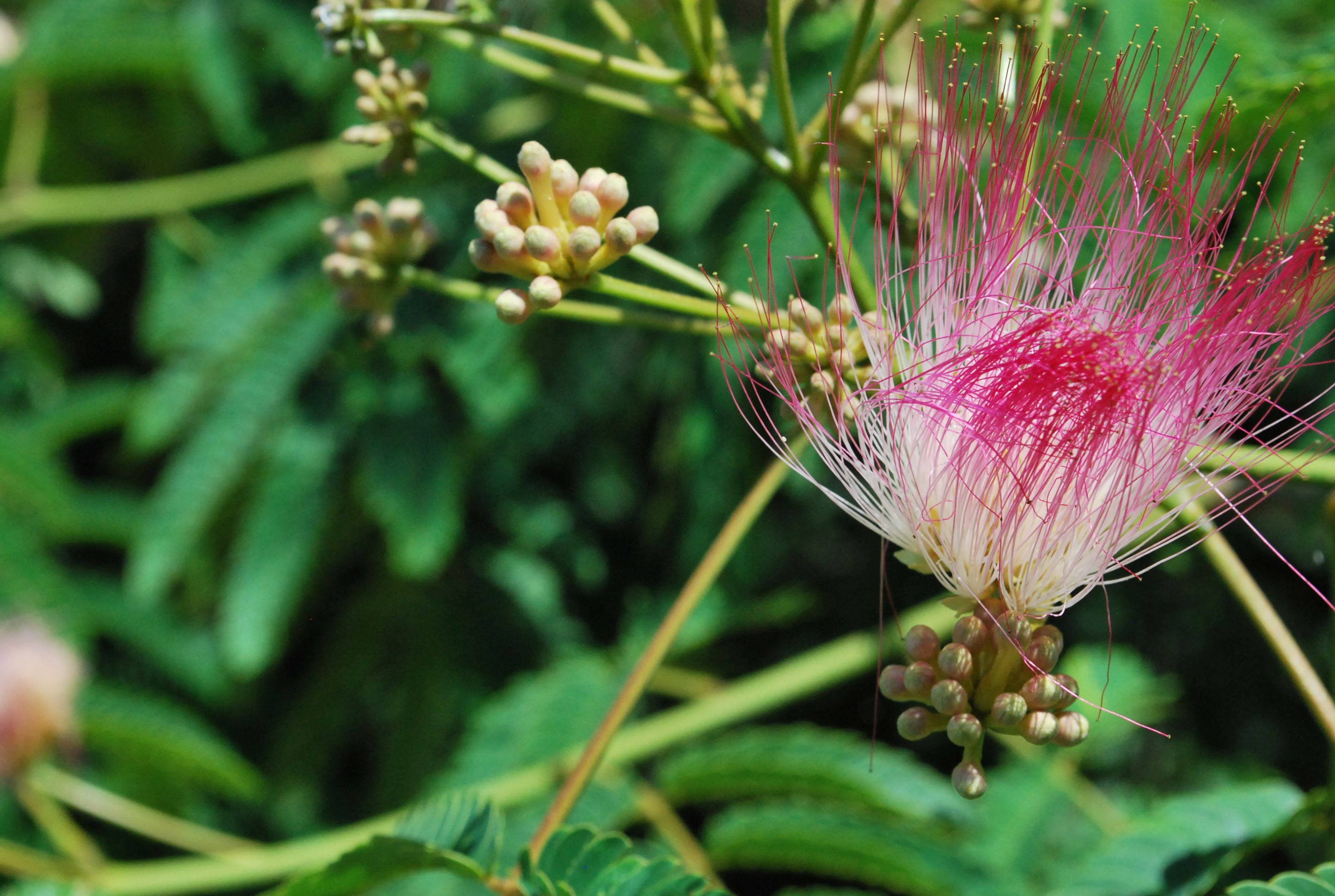
How to Use Albizia
The fresh flowers and the fresh or dried bark of Albizia can be used to make herbal preparations. I’ve not had good luck drying Albizia flowers even though I’ve tried both air drying on screens and in a dehydrator. The flowers are simply too delicate and dry down to nothing. They also lose most of their heady fragrance.
Extracts and glycerites are both great ways to prepare Albizia. Currently, Albizia is being studied for its influence on the immune system, and modern herbalists know it as a supportive herb for states of anxiety, grief, and stress.
Traditionally, the bark was used as a tonic and to support cognitive function in cases of:
- head trauma
- amnesia
- depression
- insomnia
- poor memory
It was also use for the pain and swelling of injuries, abscesses, and boils; to heal fractures; and was considered helpful for cases of stagnant Liver Qi. The bark was (and is) perceived as having a more grounding emotional influence while the flowers are perceived as more uplifting or even euphoric.
Although it is generally a very safe and beneficial herb, Albizia is contraindicated during pregnancy as it is traditionally classed as an herb that moves the blood.
A Beautiful Herb to Wildcraft
Despite sometimes being considered a weedy, invasive addition to the landscape, Albizia is a beautiful tree worthy of respect for all it has to offer as an adaptogen. If you spend any time around a mimosa tree, you quickly discover that hummingbirds and bees of all kinds adore the pink flowers- and I suspect you will fall in love with this tree, too!
All the best,
Agatha
